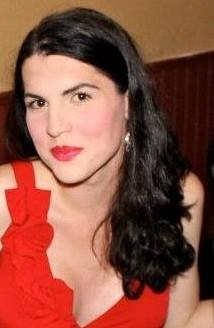By Mia Tumutch
I moved to San Francisco at 19, having recently escaped small-town Texas because of ignorance and hatred associated with the fact that I am transsexual. I arrived on a Greyhound with a huge purse, a duffle bag, and big dreams for the queer wonderland.
Then life happened. Unable to find a job because I was too visibly trans, I ran out of money and ended up homeless.
Thousands of other young queers have runa way to San Francisco, but they still face daunting statistics once they arrive. Our city by the Bay has long been assumed a safe haven for the gays — however there’s more work to be done. It’s our responsibility, as San Franciscans and decent human beings, to ensure LGBTQ youth don’t face more violence and discrimination once they make it here.
LGBTQ youth face a disproportionate amount of obstacles to success, including bullying in school, family rejection, violence on the street, and job discrimination. After coming out of the closet, 26 percent of LGBTQ youth are kicked out of their homes by their parents. While LGBTQ youth account for only 5-10 percent of the population, we represent 40 percent of the homeless youth in San Francisco. The number of LGBTQ youth coming out and becoming homeless continues to increase, while funding for services to this very vulnerable population is cut back almost every budget season.
There are more than 94,000 LGB people living in San Francisco and approximately 6,000 LGBTQ youth, but there is still not a single queer homeless shelter. There are currently 36,000 vacant housing units in San Francisco, and only 6,000 homeless people; why can’t homeless people live there?
In recent years there have been a number of policy changes that have made life harder for the homeless. In 2010, proposition L, passed making it illegal to sit or lie on a sidewalk between 7am and 11pm. This law further demonizes homeless people who can be hit with $500 fines and even a month in jail for accessing public space.
In 2011, Scott Weiner, an out gay politician representing Harvey Milk’s former district, implemented a harsh new policy even further criminalizing homeless people in the Castro. This law makes sleeping, camping, cooking, creating a shelter, and using a four-wheel shopping cart all illegal at all times in Jane Warner and Harvey Milk plazas. The law goes further to ban the selling or bartering of merchandise without a permit.
In the 1970s, a similar sit-lie law in San Francisco was used to unjustly harass gay men. Harvey Milk crusaded against these laws until he was killed — and now the plaza named after him has the harshest sit-lie law in the city, and it’s driving LGBTQ youth out of the Castro.
“My queer friends are leaving the city because they feel run out of the Castro,” explains a homeless youth and active ally in the LGBTQ community. “We get harassed by cops at least three times a day, when we aren’t harming anyone at all. I was told by a police officer that me sitting on the benches in the Castro community was disrespectful of the hardworking people of the neighborhood. Then she told me to get a job.”
It’s our duty as citizens of a supposed sanctuary city to not turn a blind eye on the plight of homeless people, and especially not LGBTQ homeless youth. Let’s repeal sit-lie laws and stop cutting desperately needed funds for LGBTQ youth. Let’s create a shelter for LGBTQ people, and establish a permanent source of funds to make housing affordable for everyone. The solution to ending homelessness is not to increase criminalization and harassment; we need to expand our consciousness and compassion.

